Why is carbon fiber so expensive? Revelations about this much-misunderstood material
Why do carbon fiber bikes cost so much? What's this material really made of and can a repaired frame ever be judged safe? We lift the lid on carbon fiber and question its sustainability
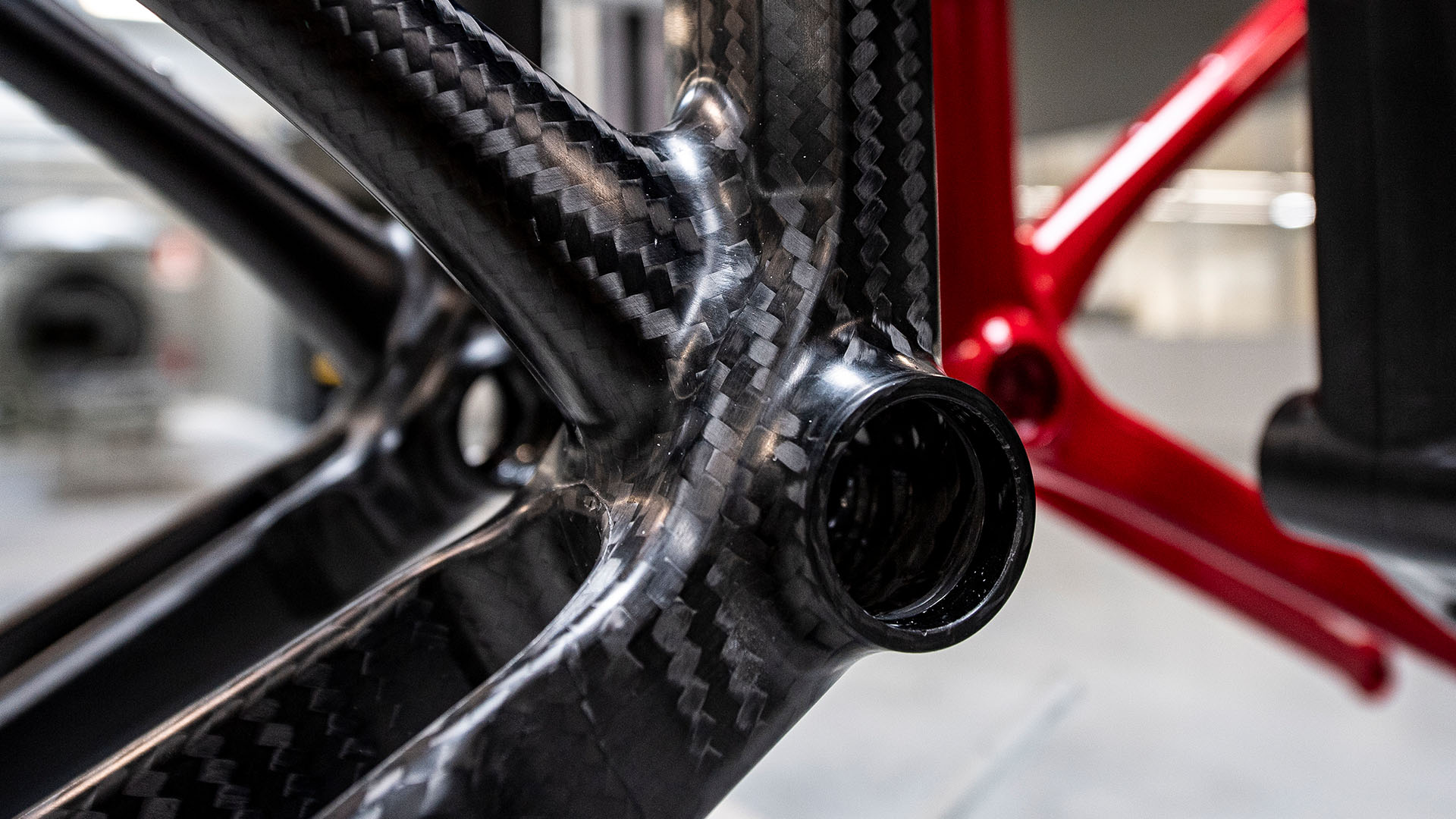
Carbon fiber is often considered a superior material for bicycle frames because it is strong, light, and relatively easily fabricated to be super stiff in one direction yet compliant in another. Despite its popularity, it’s not a material that’s well understood.
Why is it so expensive? Why was it invented? Is it repairable? Will it wreck the planet? Let’s find out.
Why carbon fiber?
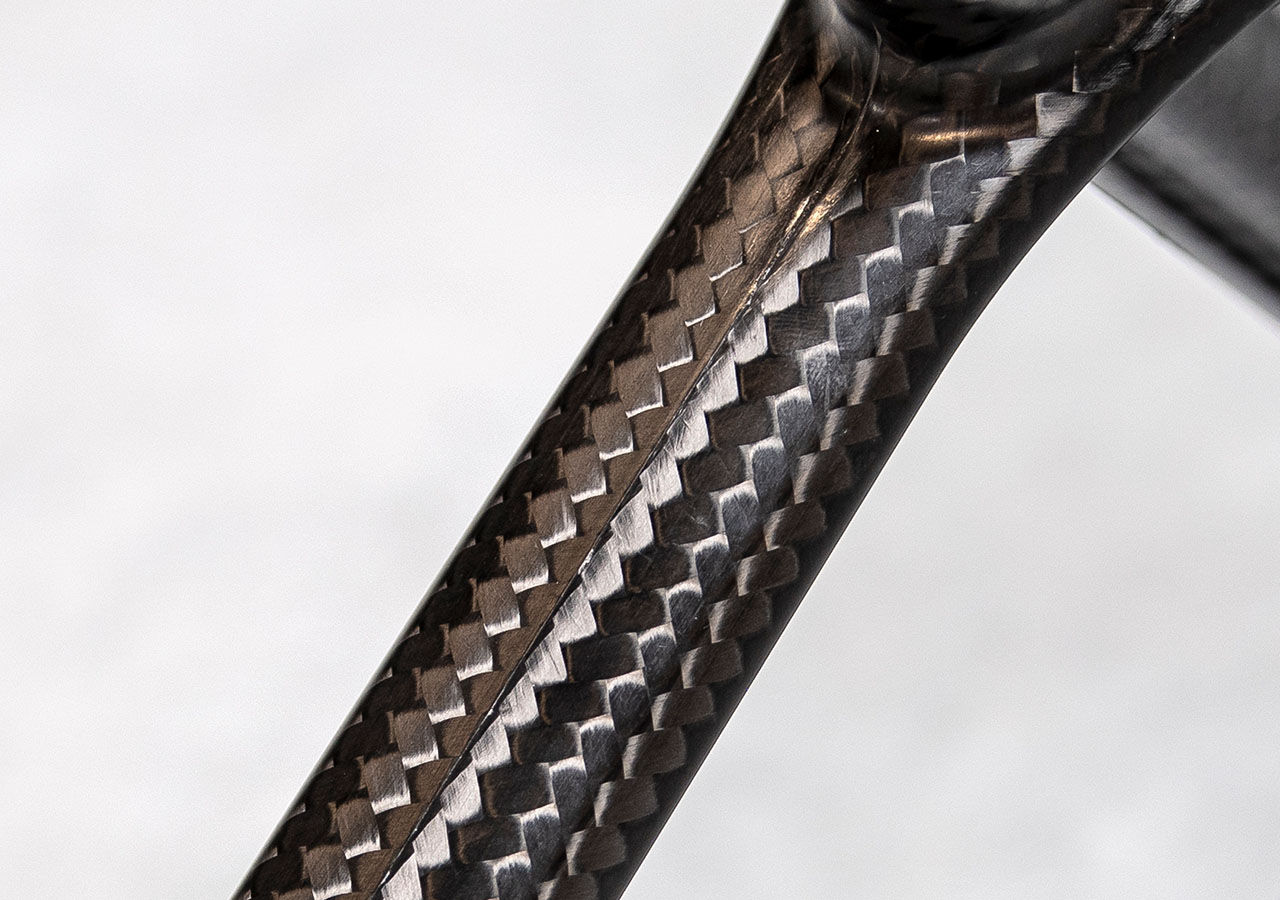
Carbon fiber is a versatile composite that enables bike designers to develop frames with qualities specifically suited to particular applications. They can be brilliant on tarmac, plush off-road or rocket fast on the track. Bikes can be developed to be predominately stiff and racy - my Specialized Venge aero bike feels so rigid it barely flexes at all - or swift but comfortable, like the beautiful Bianchi Specialissima, a performance endurance bike that can be ridden for days.
Because carbon fiber fabrication – commonly known as layup – doesn’t require unsightly joins, frames can take on attractive, organic shapes too, often in the quest for aero gains. It’s the sort of material that makes people coo.
Why the high cost?

Bianchi's Oltre RC Tour de France bike is a carbon fiber masterpiece, but it's pricey.
There’s no getting away from it, even entry-level carbon frames are expensive. A premium carbon fiber bike, such as a Trek Madone SLR 9 Gen 7, can set you back more than $16,000/£13,000, with at least a third of that cost attributable to the frame. Why the weighty price tag?
“Fifteen years ago, the cost of building a frame was a third labour, a third materials, and a third overheads, but now labour has become the highest expense,” says Rob Gitelis, CEO of Factor Bikes. “A lot of companies have moved factories from China to Southeast Asia because they're looking for lower cost labour.”
The cost of materials has shot up too. Carbon fiber is made from oil, so its price has been increasing amid the recent Middle East tensions and Red Sea shipping attacks.
Get The Leadout Newsletter
The latest race content, interviews, features, reviews and expert buying guides, direct to your inbox!
“If we look at 2023 to 2024, there’s been about a 16% increase in the price of carbon fiber,” says Gitelis. “Oil is definitely a really big factor, as is demand from other industries. A lot of the time we're competing with the aerospace industry for material, which causes the price to increase.”
Despite this, Gitelis believes it’s unlikely price increases will be passed onto the consumer just yet.
“I think a lot of the carbon fiber manufacturers will be looking for price increases, but brands will have to absorb these because business is so competitive at the moment. There's a lot of inventory causing trouble.”
The cost of carbon also depends on which type or grade of fiber is used.
“There are a lot of different factors that go into the costs, from the price of oil, to how you design the frame, but it also depends on which fibers you're using and how refined they are,” explains Sam Pendred, design engineer at Hope.
“For our track frames we're using the highest spec carbon fiber – high modulus – you can get, which was expensive anyway, but is still going up. But if you use a more standard modulus fiber, it’s less.’
According to Pendred, 100g of high modulus UD (unidirectional) carbon fiber costs over £100 per square metre, while 300g standard modulus UD costs under £25. Approximately seven square metres go into a Hope track frame, of which most is 100g high mod UD, thus costing the brand about £700 in material costs.
What is carbon fiber?
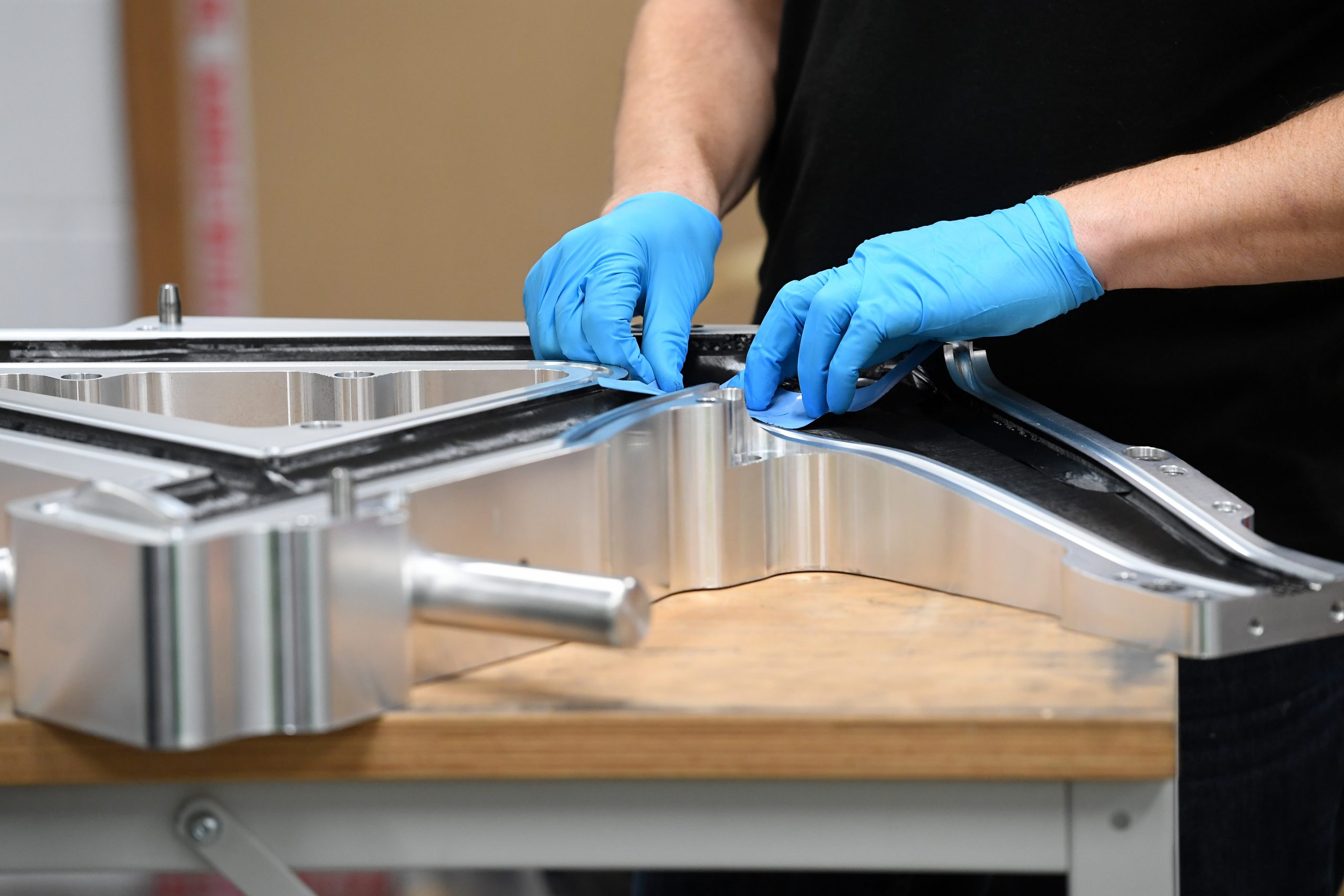
Hand crafting a carbon fiber frame in a specially formed mould
Surprisingly, for what’s considered a cutting-edge material, carbon fiber was developed more than 160 years ago, originally for use in incandescent light bulbs. However, it failed to light up much excitement until the aerospace industry recognised its usefulness in the 1960s. As previously mentioned, it’s a by-product of the oil industry.
“Carbon fiber is made from the base tar from oil refineries, it's essentially sludge,” explains Rob Granville, director of Carbon Bike Repair.
“This sludge is separated into two types of carbon: the cheap carbon, which looks like an asbestos replacement and acts like cement, and the finer stuff called Polyacrylonitrile (PAN) carbon.
“It is this carbon which is then purified, using heat, and from that process you get graphite, which is the first material you can use. From there it is heated again to get what we call low modulus carbon, which is what most bicycles are made of. If you heat it again, and add more chemicals, you get high modulus carbon, which is very strong and very stiff, but incredibly fragile.”
“The reason we use prepreg is so we can accurately predict how much resin to fiber we get, which is important when you're trying to predict strength and stiffness.”
Chris Clarke, composite expert at Hope
“During the heating process, the PAN fibers are spun out repeatedly to get rid of all the oxygen and then heated again at very high temperatures to carbonise it, getting rid of any impurities,” adds Chris Clarke, composite expert at Hope.
“What is left are fine filaments about ten times less than the width of a human hair. These filaments are grouped together into what’s known as tow, which is then wound onto a bobbin. The fibers are woven into a fabric, which is impregnated with an epoxy resin to glue them together, creating thermoset prepreg carbon fiber sheets.
“The reason we use prepreg is so we can accurately predict how much resin to fiber we get, which is important when you're trying to predict strength and stiffness.”
How are carbon frames made?
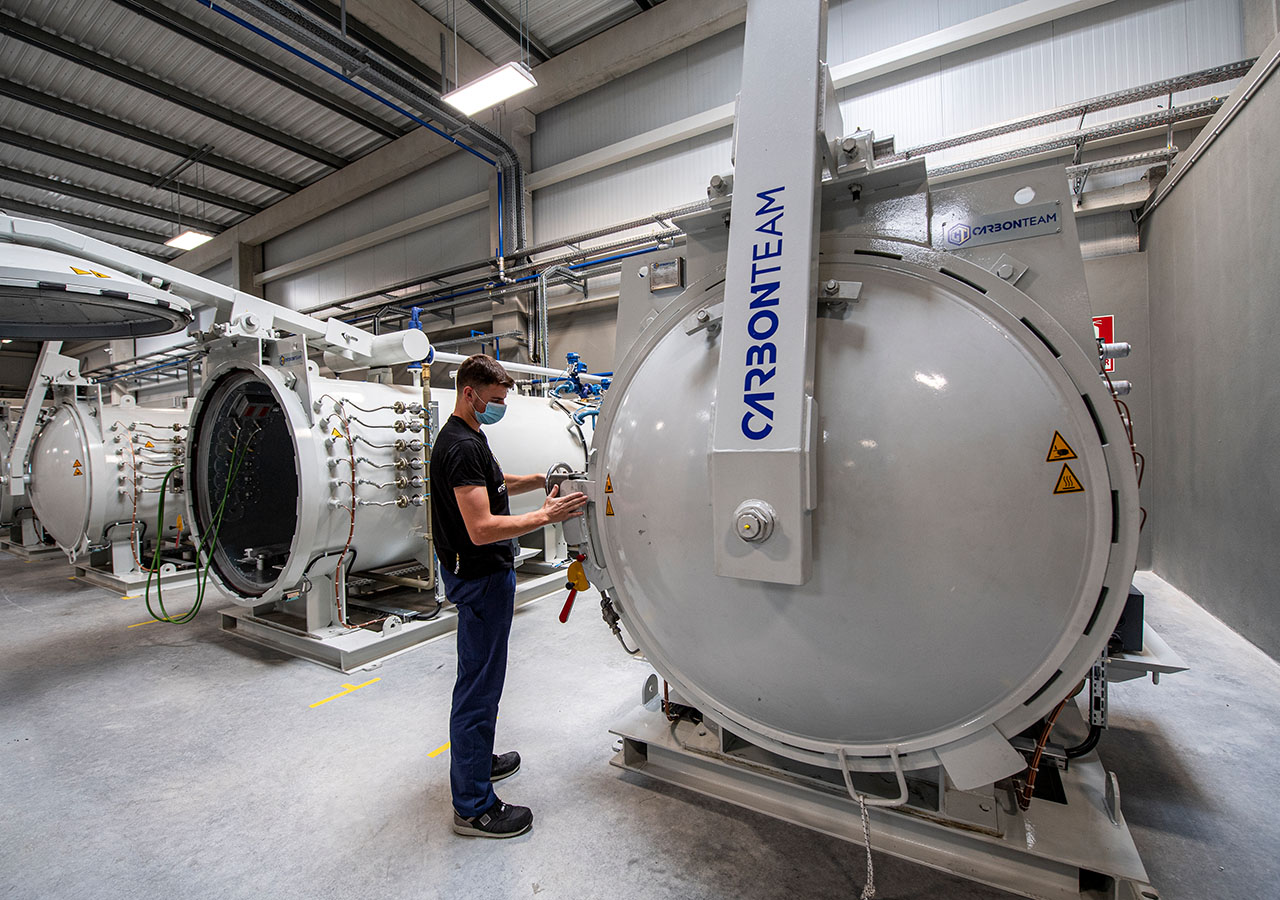
Carbon fiber frames need to be cured in a large oven called an autoclave
To make a bicycle frame, sheets of prepreg carbon fiber are cut and layered on top of one another in a mould. How the sheets are laid up, both in thickness and direction, will influence the properties of the final frame, allowing stiffness, strength and compliance to be dialled in - and out - at will.
“One of the qualities of carbon fiber, which makes it so attractive to bicycle manufacturers, is that you can hide the DNA of a frame’s construction in the layup,” says Granville. “Nobody can tell how many layers are in the frame except the designer.
“Once layered up, the frame is put into a giant oven called an autoclave, where it is heated until the epoxy within the layers softens enough to bond them together. To stop the frame collapsing inward, balloon-like bladders are strategically placed within the tubes.
“From a design perspective, carbon fiber offers infinite possibilities because a frame can take on almost any form. I believe the designers within our industry are some of the finest creatives working with composites today, even more so than Formula One. Yes, the opportunities that carbon fiber offers designers are infinite but they still have to work within strict limitations - weight, power output, UCI rules and what the market will bear in terms of performance, aesthetics and cost.”
Is a repaired carbon frame safe?
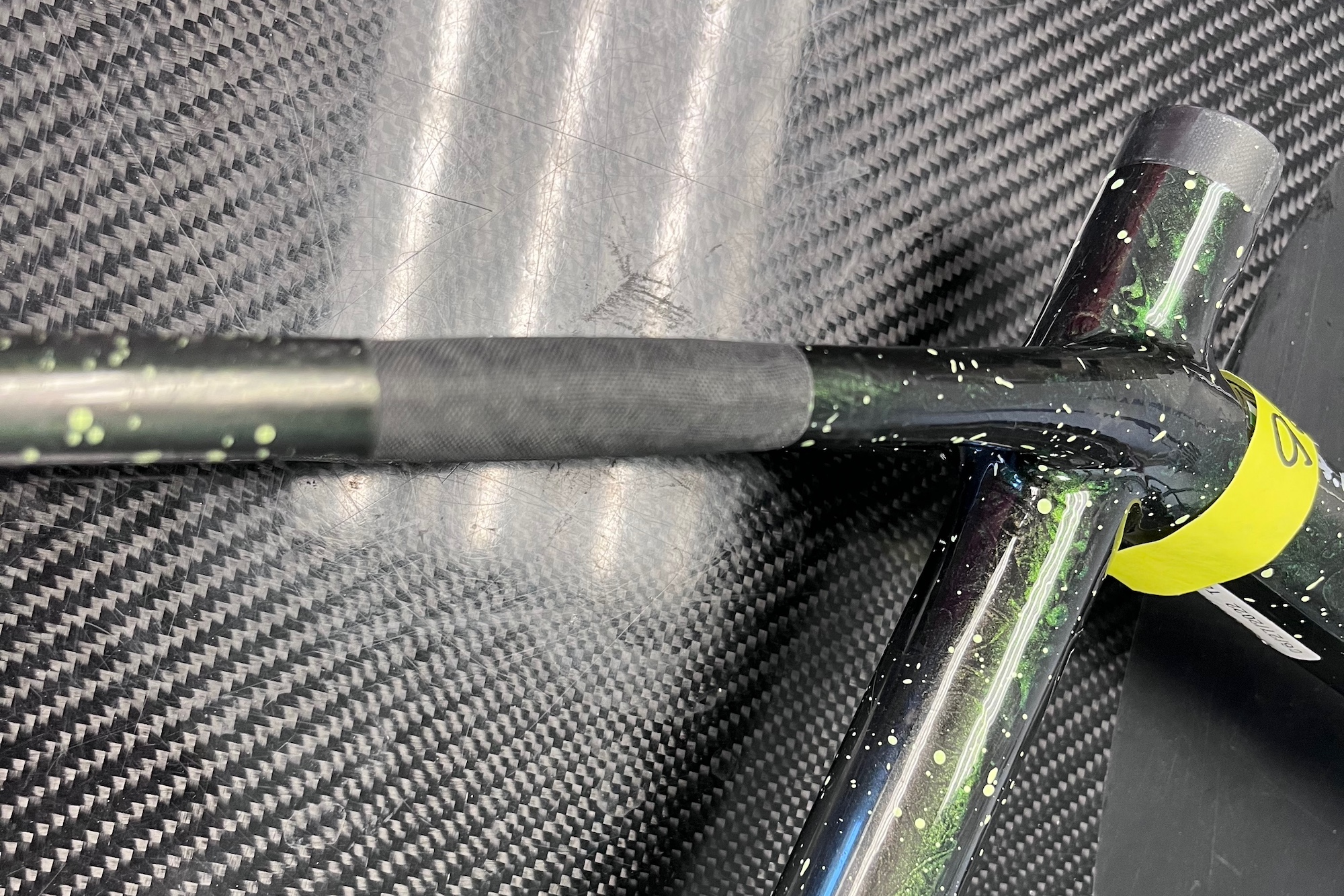
Many riders are under the misapprehension that carbon fiber cannot be repaired, although it is true that repairing a carbon frame is not always straightforward.
“It amazes me after all these years that some people are unaware that carbon can be repaired,” says Granville.
“It’s correct that modern bikes are almost irreparable by hand. If you don't have a machine that can simulate the actual mould that the bike came out of, the compression of the carbon, the wall thickness of the carbon and the profile of the frame, then you cannot guarantee the repair without cutting the bike in half to check it. It takes technology to make a bicycle and technology to repair one these days.
“Carbon fiber is infinitely reparable provided you can place carbon on carbon and they bind. Bearing in mind that you cannot test to destruction, the only things unwise to repair are parts of a frame that are both unique and structurally critical. For example, can you imagine your steerer tube snapping at the foot of your head tube? You would go face down. It’s the same with handlebars, particularly where the stem clamps.”
How sustainable is carbon fiber?

As a by-product of the oil industry, and a reliance on a manufacturing process that consumes a lot of energy, it’s challenging to consider carbon fiber a sustainable material.
“The main environmental issues with carbon fiber are the production process and the waste at the end of the product lifetime,” explains Erik Bronsvoort, founder of Circular Cycling.
“The energy requirement to make the fibers, and the associated CO2 emissions are huge. For each kg of carbon fibers produced, 20kg of CO2 are emitted. That’s before they’re mixed with resin and transformed into a product.
“The waste at the end of the lifetime is also problematic. Most thermoset carbon fiber used in bicycles cannot be recycled. It ends up in landfill, or probably even worse, is burned in an incinerator, where the resin melts or burns, but the temperature is too low to burn the fibers, which end up in the ash. This ash is then often used as a “green" product in road construction, making things even worse in the future.
“Every brand and designer needs to take responsibility for the products they bring to the market. This goes from labor rights in the supply chain, to deforestation, energy use, product longevity, repair options and waste. The impact our linear economic system has on our planet can no longer be ignored, and waiting for governments, or expecting consumers to do the right thing is just not good enough.”
So, how does Bronsvoort see the future of carbon fiber unfolding?
“As more companies become aware of the impact of carbon fiber, more will start to innovate alternatives,” says Bronsvoort.
“For example, I have seen some really cool developments in biofiber composites in the sailing and car industries. So, I think we will see more recycled biocomposites in the future, with traditional thermoset carbon fiber being reserved for the ultra-high-end parts where it’s really needed.”
Is thermoplastic the solution?
Thermoplastic carbon composite is gaining momentum as a more sustainable alternative to thermoset carbon fiber, but is this reputation deserved?
“Part of the global initiative around waste is to remove the thermoset process, because it produces materials, like carbon fiber, that can be repurposed,” explains Granville.
“As a result, the composite industry is turning to thermoplastic carbon fiber as one alternative. Thermoplastic is a standard plastic, like nylon or polypropylene, which is ground up and can be melted down several times. You pour this plastic goo onto strands of carbon, compressing and squeezing it until it is thoroughly incorporated. When it is dry and ready for manufacturing, another piece of carbon is laid on top, ready for more heat to be applied until the materials melt and bond together, resulting in a thermoplastic component.
“If, at a later date, the product gets chopped up, the material can be reused by reheating it, enabling a substantial waste reduction. The first products we’ve seen made from thermoplastic, or fusion plastics as some people call it, have been mountain bike wheels because they're softer to ride, providing a bit of suspension. Thermoplastic is interesting, but it's not as efficient in its stiffness as thermoset, so manufacturers are struggling to make frames as fine and as light.”
For Bronsvoort, it’s also not clear-cut.
“Thermoplastics offer the option to recover the fibers by melting away the resin, but I have not seen proof that these fibers can be used to make the same product again - usually you see a ‘downcycle’ instead of a ‘recycle’ as fibers get shorter,” says Bronsvoort.
“Another thing is, how do consumers recognise that a product is recyclable thermoplastic? How does the product end up in a facility that has the technology to recycle it? These consumer-related reverse logistics factors are difficult to overcome.”
Or is it plant-based fibers?
Carbon manufacturer Toray obtained certification to use biomass to produce and supply carbon fiber from the end of 2023, but exactly what these materials contain is not clear. Toray did not respond to Cycling Weekly for a comment, so we turned to Hope’s Chris Clarke for a prediction.
“Plant-based fibers are being considered,” says Clarke. “Flax has been tried before but was difficult to make and not very strong. But there’s a material called lignin, which people think they can carbonise instead of oil in the future.
“Lignin is a polymer that fills the spaces between cellulose fibers in the cell walls of plants, making them rigid. It is found mainly in woody plants, such as shrubs and trees, and is widely abundant.”
According to research on sustainable lignin-based carbon fiber, replacing traditional carbon fiber with lignin-based carbon fiber reduces the global warming potential of production by 54%.
But not everyone is convinced.
“Almost any fabric or textile can be turned into a carbon fiber substitute material if you mix it with a resin that will cure into a solid form,” says Gitelis.
“We've seen hemp-based material, we’ve seen bamboo, but nothing has the same stiffness properties of carbon fiber. One of the things that we get from carbon fiber that we don't get from any other material is the stiffness characteristic. It’s this quality that makes a good bicycle frame.”
The bottom line
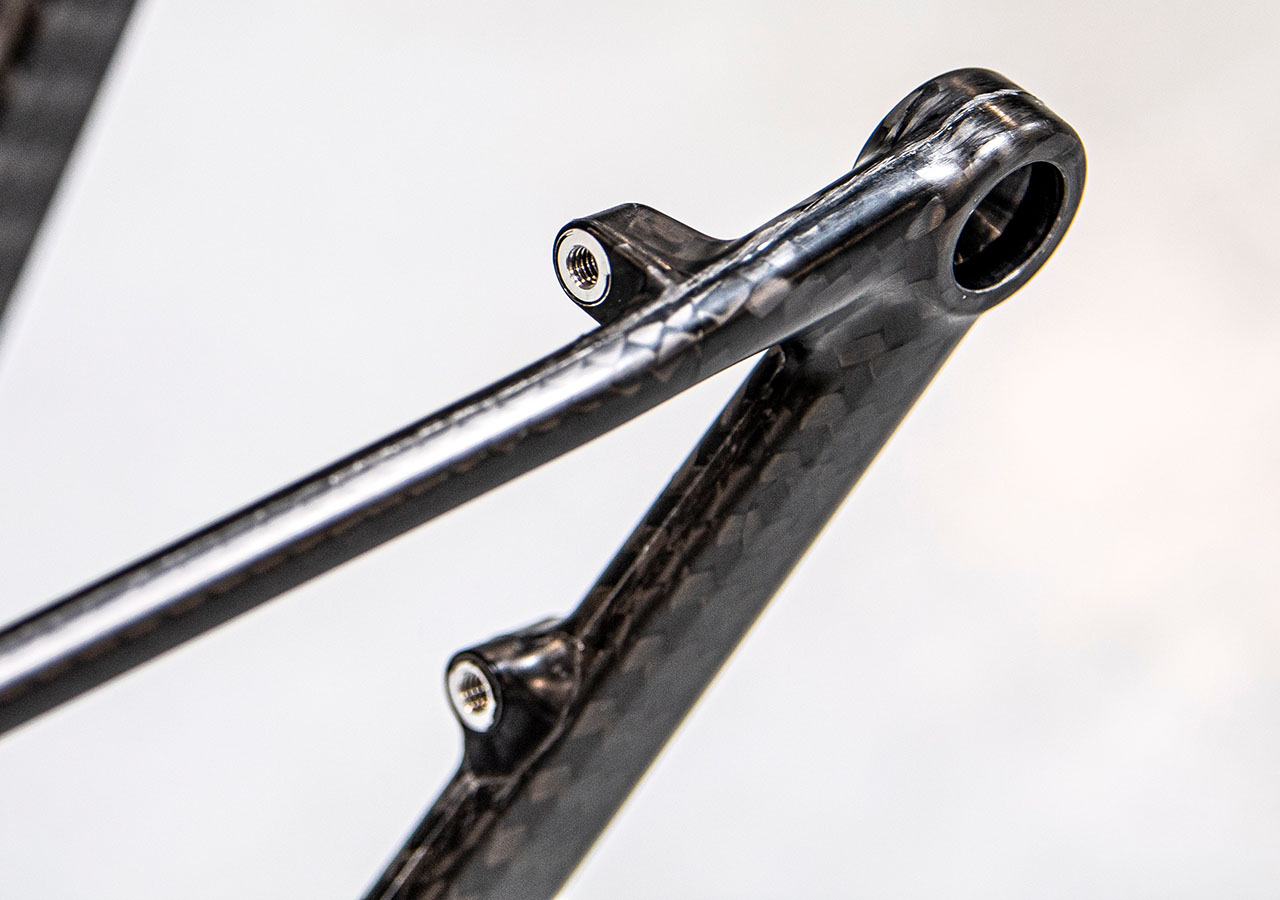
Carbon fiber is a remarkable material that enables us to ride aesthetically pleasing, lightweight and exhilarating bikes that provide a ride feel like no other material. So, the huge demand for carbon fiber frames is understandable.
But the carbon fiber landscape is multifaceted, with a stream of design, innovation, economic and environmental challenges. Evidently, there is a growing interest in making the material more sustainable, and I for one hope that we can find environmentally friendly solutions that enhance the material and our overall enjoyment of cycling.

Thank you for reading 20 articles this month* Join now for unlimited access
Enjoy your first month for just £1 / $1 / €1
*Read 5 free articles per month without a subscription

Join now for unlimited access
Try first month for just £1 / $1 / €1
-
 'This is the marriage venue, no?': how one rider ran the whole gamut of hallucinations in a single race
'This is the marriage venue, no?': how one rider ran the whole gamut of hallucinations in a single raceKabir Rachure's first RAAM was a crazy experience in more ways than one, he tells Cycling Weekly's Going Long podcast
By James Shrubsall
-
 Full Tour of Britain Women route announced, taking place from North Yorkshire to Glasgow
Full Tour of Britain Women route announced, taking place from North Yorkshire to GlasgowBritish Cycling's Women's WorldTour four-stage race will take place in northern England and Scotland
By Tom Thewlis